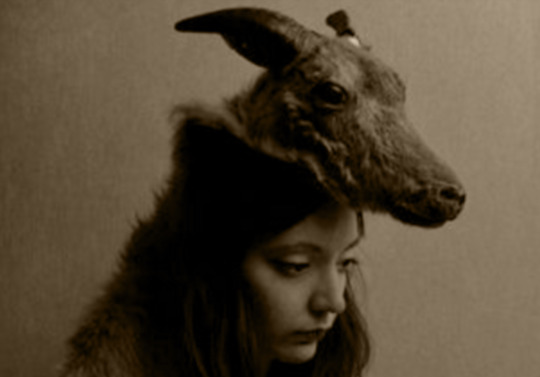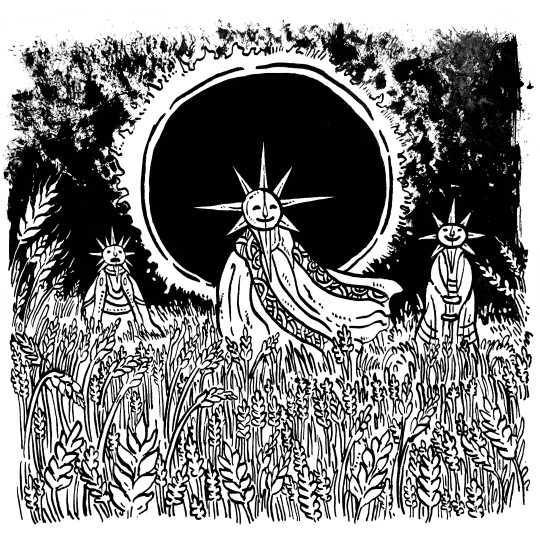Note
I've seen somewhere that Thessalian witches had forced Selene down from the sky to steal her blood/power despite her being a goddess. In "living with the dead in the middle ages", monks would humiliate the sacred images and relics of the saints to "disturb the proper relationship with the human and the supernatural orders" I've also heard that people had whipped the statues of the saints for not answering prayers. If divine figures are powerful, why can we use force against them in those ways?
This is a brilliant question, thank you.
Now, I’ll give you a Wicked But Honest witch answer, and not a devout / religious one, nor a scholarly one either - an answer rooted in experience and not abstractly discussing religious concepts and theories, exercise for which I am vastly unqualified. So here is a practical answer from a rather practiced occultist.
I understand why, for argument’s sake, you want to shove together a Thessalian moon drawing and some Catholic folk magic, but I think it is important not to loose sight of the cultural and theological contexts in these respective examples. There are specific implications that come with each of them that are worth glossing over.
Thessalian witches and Medea in particular were feared and revered precisely for their capacity to threaten even the gods themselves and in the case of Selene to humiliate and wound her for a night - that’s why they were witches, and that’s why they were feared and revered : because they stood between humanity and the gods, and were capable not only to act against the will of gods / the laws of nature without facing your normal punishing consequences (although...), but to make them do their will, at will - which definitely and irremediably sets them apart from normal human beings (but don’t be fooled, it comes with a cost). Gods are powerful but not omnipotent, and this, my dear, is the reason they tend to dislike witches generally speaking : because we know that. Of course it is hubris, and of course it is dangerous - that’s why not everyone is a witch or magician. And yes, you get to this stage by getting burnt and hurt, by faking it till you make it, by counting the battle scars.
Catholic folk magic, however, in the case of the examples you provide is ‘simpler’ (in that such acts were not performed by magical practitioners only but also and perhaps more so by your average, normal, common people - it’s all in the ‘folk’ aspect of it). It is apparent not to a wounding or degradation proper - this point is arguable of course - but rather to some sort of emotional blackmail applying pressure to the well known fact that gods love to be fed - whether or not they actually need it is another theological debate entirely, one that I am happy to leave others more competent and religious than me to answer. (In fact learning from this side of the coin would be greatly beneficial as well so mutuals feel free to chip in.) Gods love the attention, the offerings, the worship, the incense, the rituals, and they derive pleasure and occasional sustenance from it. Deprive them willingly of such a source of enjoyment for long enough, while being scornful enough, and you obtain a disgruntled god either more willing to cooperate - the way you annoyingly seek refuge inside when being pestered by wasps on a picnic blanket -, or, and this should be kept in mind, to literally strike you down on the spot depending on how serious the offense - the way you would kill the wasp without thinking twice about it. Which brings me to my second point - how annoying is the wasp VS how stinging its venom; i.e, is the wasp worth the effort and if so, what kind of effort, i.e : power.
For you see, at the end of the day, from an occultist’s point of view it is all about power. Admittedly, and this has been said time and time again out there with more or less edge to it, to the point that this edge is now also quite blunted, if you want to do magic, a certain dose of ego, pride, and, yes, force/strength, sometimes translated as spirit bullying, is required. This is because for many spirits (and yes this includes all of them from divine figures to the lowest of demons), a regular display of fair power is necessary - in order to make them listen, and to bend the laws of nature enough to manifest applicable results. Power is power : it can be shown and proven. Power is buildable : it gets refined with the years. The more powerful you are (as in, your magic), the less these displays of power become necessary, because then power can be recognized and felt about a person, or in the case of spirits, seen. And that is just as good, because « The Craëfte is amoral and üglie », as a narrative, is tiresome, and quite frankly, boring, as a notion. It contains truth (quod erat demonstrandum) but is just one facet of a complex kaleidoscope encompassing humans and spirits relationships as well as the laws of magic, a kaleidoscope with subtle nuances that too often gets oversimplified by amateur practitioners. Now, in a world where dog eats dog is the law of the land, true power is rooted in honour, imho. Nobility, is a rare quality. So is doing justice, and showing mercy.
Know that your power is colored by its very source, that which you work with, and know as well that power is carrying a weight that can be felt and understood before even knowing you properly, sometimes almost on a physical level. Make of that what you will, and let your actions speak for you accordingly.
222 notes
·
View notes
Text

Talisman and Magic square from September 1915 issue of Himmel und Erde
172 notes
·
View notes
Text
“For the witch of pre-modern times, the hedgerow served both as a pharmacy and as a larder, and indeed, no modern witch can advance very far in the craft without at least a gastronomic intimacy with its hips and haws, its sloes and bullaces and crabs. More importantly still, it has always been a magical and poetic inspiration. Whether viewed in spring, when the hawthorn tips punctuate the winter browns with vivid greens, at the height of summer, when the foliage is milk-splashed with elderflowers, in autumn, when every bough is burdened with ripening fruits, both healthful and baneful, or even in winter, when the hedgerow is a gaunt skeleton of plashed boughs, dormant, leafless branches and forbidding, criss-crossed thorns, the living hedgerow is the place where nature and nurture are in equilibrium. In a modern age in which people span the globe in search of the mystical, the witch affirms that the otherworld is never further away than the nearest hedge.”
— Giles Watson, A Witch’s Natural History, pg. 117 (via blackthornwren)
236 notes
·
View notes
Text
a Babylonian exorcism formula
ašḫuṭ ašḫuṭ aštaḫaṭ aštaḫaṭ
imṭīya tāniḫīya u tādirātīya
u'a ayya mimma lemnu ša ina zumrīya šer'ānīya bašû
ina muḫḫīkunu ašḫuṭ
ašḫuṭ ša zumrīya ina muḫḫīkunu
ašḫuṭ ša šīrīya ina muḫḫīkunu
ašḫuṭ ša šer'ānīya ina muḫḫīkunu
ašḫuṭ ša mešrētīya ina muḫḫīkunu
I have stripped off, I have stripped off, I have stripped off for good, I have stripped off for good,
Upon you my depletion, my sighs and sorrows, woe, alas, all evil that is in my body and in my veins
What’s in my body I have stripped upon you
What’s in my flesh I have stripped upon you
What’s in my veins I have stripped upon you
What’s in my limbs I have stripped upon you
—
One of the incantations that’s part of a larger ritual for getting rid of evil spirits in ancient Babylon. Pronounce the š like the English sh, ḫ is the guttural h (like Hebrew chet), ṭ is an emphatic t. vowels with a macron over them indicate long vowels.
This is a very nice formula and once you get used to reciting it it rolls right off the tongue.
257 notes
·
View notes
Photo


Lola Zaza Crowley (1907 1990) Aleister Crowley’s daughter.
12K notes
·
View notes
Photo


Antonin Idrac (1849-1884), ‘Salammbô’, 1903
Source (for the first image at least)
511 notes
·
View notes
Photo

Dois gatos e uma senhora. 1958. Two cats and a lady.
558 notes
·
View notes
Text

When you don't know what/how to practice and feel lost, you are NOT.
Just DO something little. Think about the strenght of insects..
30 notes
·
View notes
Photo


Solomon Kane (2009) dir. Michael J. Bassett
7K notes
·
View notes
Text
“Grimoires exist because of the desire to create a physical record of magical knowledge, reflecting concerns regarding the uncrontrollable and corruptible nature of the oral transmission of valuable secret or sacred information. This urge to provide a tangible magical archive dates right back to the ancient civilization of Babylonia in the second millennium BCE. But grimoires also exist because the very act of writing itself was imbued with occult of hidden power. ‘A book of magic is also a magical book,’ as one historian of the subject has observed.”
— Grimoires by Owen Davies (via secretworkings)
791 notes
·
View notes







